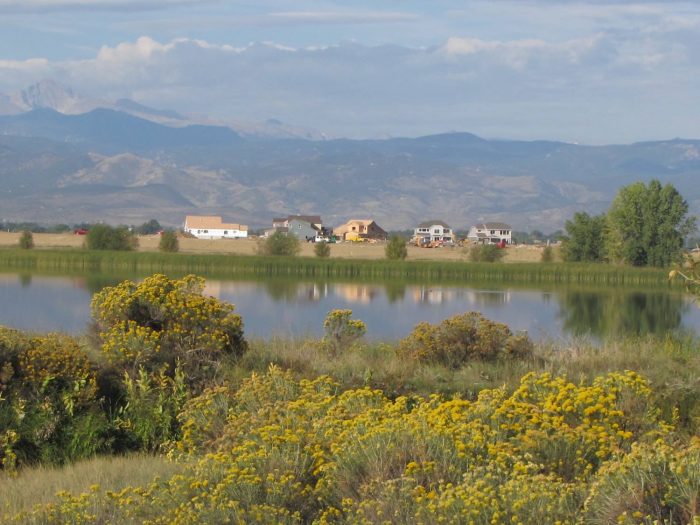Happy Earth Day 2019 – Much has been accomplished since the first Earth Day in 1970 and there is still much that needs to be done on both the local and global level to protect our environment. At High Plains Environmental Center in Loveland, Colorado, we choose collaboration over confrontation as a strategy for restoring the natural world and encourage individuals to take responsibility for the ecological health of their own communities. Here are 10 things you can do in your own neighborhood right now to improve our environment.
1) Keep dogs on a leash in natural areas and remove pet wastes: Did you know that pet waste spreads disease? Mange, a disease carried by dogs, has spread to foxes in our region which have died off in large numbers. In the absence of these predators the rabbit population has exploded leading to the destruction of our gardens and landscapes. Dogs can harass wildlife and ground nesting birds such as killdeer, lark buntings, and meadow larks have declined by more than 60 percent in the last 40 years due to loss of habitat and pressure from people and pets.
2) See it, pick it up: Trash is a continual challenge in natural areas and storm water ponds. Trash can have immediate impact in natural areas or make its way down the waterways to join the 275 million tons of trash that finds its way to our oceans every year.
3) Remove the owl killing machines: Rodent poison dispensers placed outdoors can poison mice which can then be eaten by hawks and owls (as well as pets.) The raptors can be killed by the poisons and the result is more rodents!
4) Wash your car at a carwash, not in the street: Phosphates from soap can promote algae which clogs waterways, and reduces oxygen in streams and lakes, killing fish and other aquatic life.
5) Avoid over fertilizing: Nutrients in fertilizer can promote algae and weed growth. Don’t apply fertilizers before a rainstorm to avoid runoff and consider using slow release fertilizers to minimize the number of annual applications.
6) Reduce Turf Grass: Did you know turf grass is our single largest crop in the U.S.? More herbicide and pesticide is used on this crop than any other crop and over eight hundred million gallons of gas are used to mow American laws every year.
7) Grow beautiful, water-saving, native plants in your garden: Native plants have a unique ability to support our pollinators and birds. In the Rocky Mountain region, native plants are well adapted to our bright sun and dry conditions and they require little or no fertilizer, pesticide, or water to thrive.
8) Reduce pesticide use: In the 1960s Rachael Carsen wrote about DDT use and the banning of this substance has helped to save the bald eagle from extinction. However, pesticides such as neonicotinoids are destroying bees and other insects at an alarming rate.
9) Avoid over manicuring: Scalping your grass promotes weed growth and drought stress. Set your mower height at 3 inches or higher. Avoid over pruning shrubs to allow some to reach a height where birds can safely nest. In the fall be a lazy gardener. Did you know that many beneficial insects over-winter in the hollow stems and leaf litter of your garden plants?
10) If you are lucky enough to live near open space let it be: Untimely mowing of native grasses in open space and improper disposal of potting soil, branches, and grass clippings interferes with weed management.











Read 2 comments and reply